Psyc 6 Action Potential
1/61
There's no tags or description
Looks like no tags are added yet.
Name | Mastery | Learn | Test | Matching | Spaced |
|---|
No study sessions yet.
62 Terms
Cations have a _ charge
positive
anions have a _ charge
negative
ions important to the nervous system
Na+, K+, Ca2+, Cl-
what is the tertiary structure of a protein
a subunit composed of multiple a-helixes
characteristics of ion channels
no energy required (passive transport), can be gated or not
types of ion channels
always open, ligand gated, voltage gates, mechanically gated
characteristics of ion pumps
require energy, moves ions against their conc. gradient
neuron intracellular charge at rest
negative (-65mV)
K+ conc. at rest
more K+ inside cell, so it wants to get out
Na+ conc. at rest
more Na+ outside cell, so it wants to get in
at rest, there’s a higher concentration of Ca2+ _ the cell
outside
at rest, there’s a higher conc. of Cl- _ the cell
outside
sodium potassium pump function
uses energy to pump 3 Na+ out for every 2 K+ in
calcium pump function
uses energy to pump Ca2+ out
depolarization
getting less polarized (neurons get more positive)
pore loop function on voltage gated Na+ channel
attracts extracellular Na+
what causes the Na+ channel to open
when the neuron become more positively charged
describe the inactivated state of the Na+ channel
even if the channel is open, Na+ can not go through, occurs after depolarization
describe the neuron at rest
negative charge, Na+ and K+ channels are closed
membrane threshold voltage
-55mV
what happens immediately after threshold is reached
Na+ channels open and Na+ rushes in, causing rapid depolarization, K+ still closed
what happens after depolarization
repolarization, Na+ channels inactivate, K+ channels open allowing K+ to flow out, neuron becomes negative
what happens after repolarization
hyperpolarization, Na+ channels return to closed state, K+ channels still open leading to a very negative neuron (-100mV)
absolutely refactory periods
no chance of firing another action potential (depolarization and repolarization)
relatively refactory periods
small chance of another action potential because the neuron is already more negative than normal
tetrodotoxin
targets Na+ channels
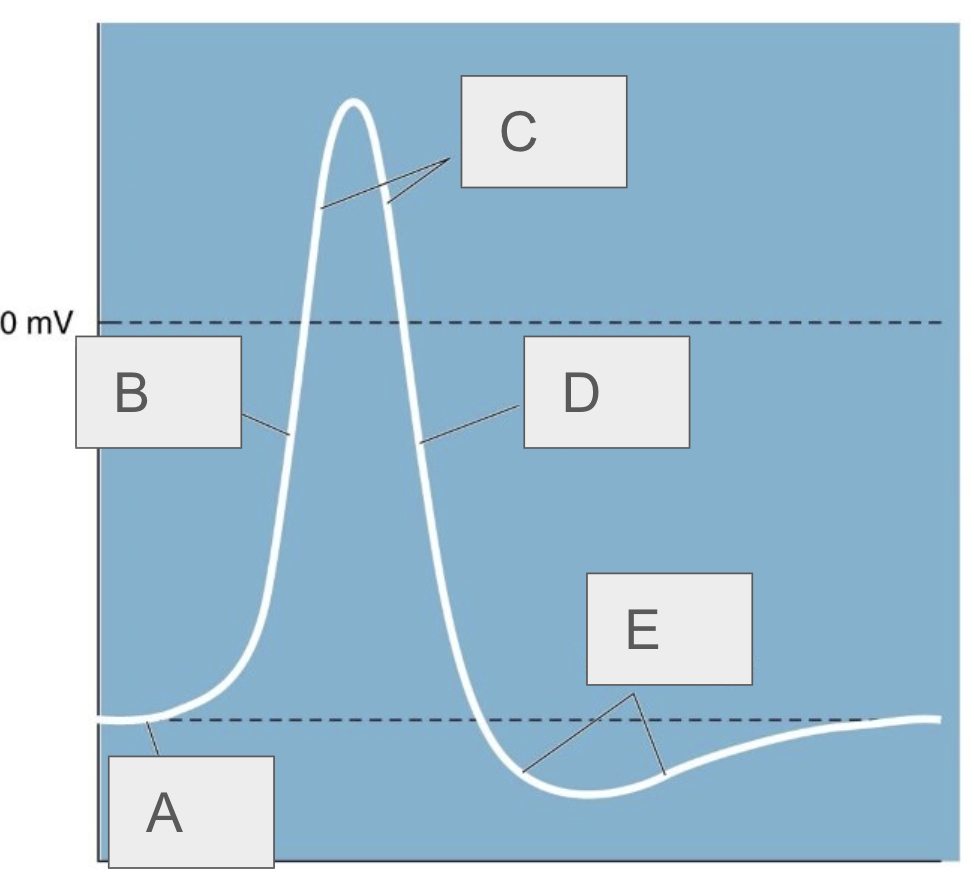
A
resting potential
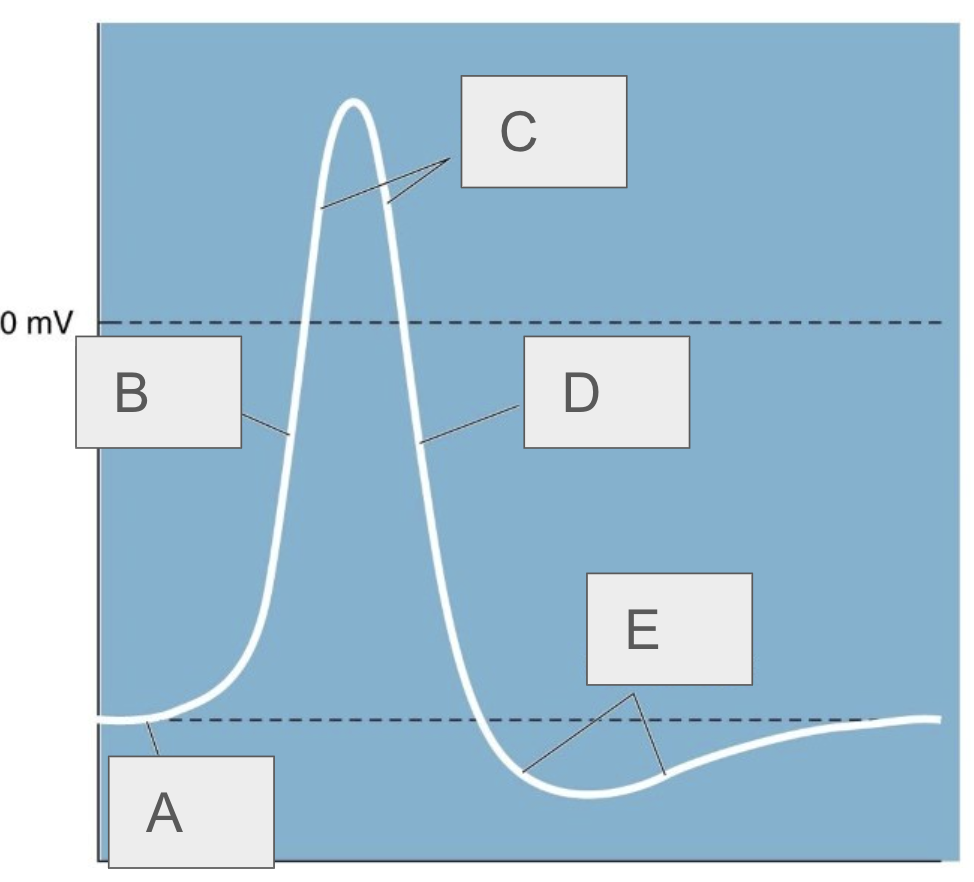
B
rising phase
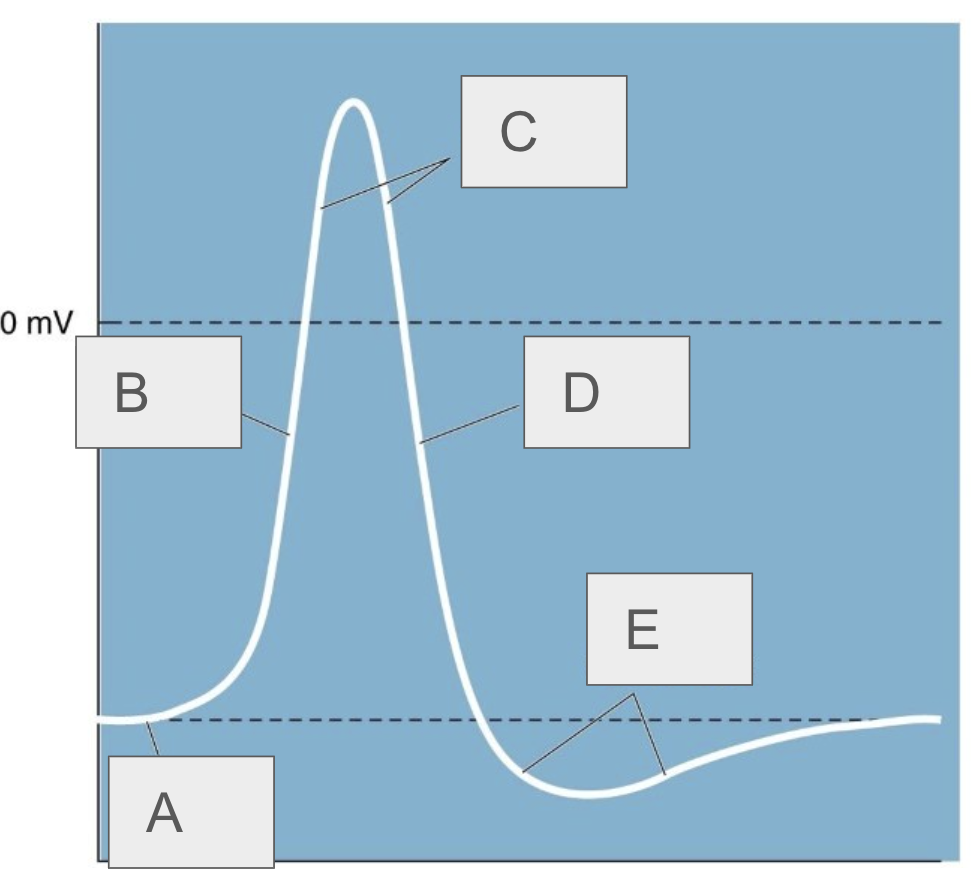
C
overshoot
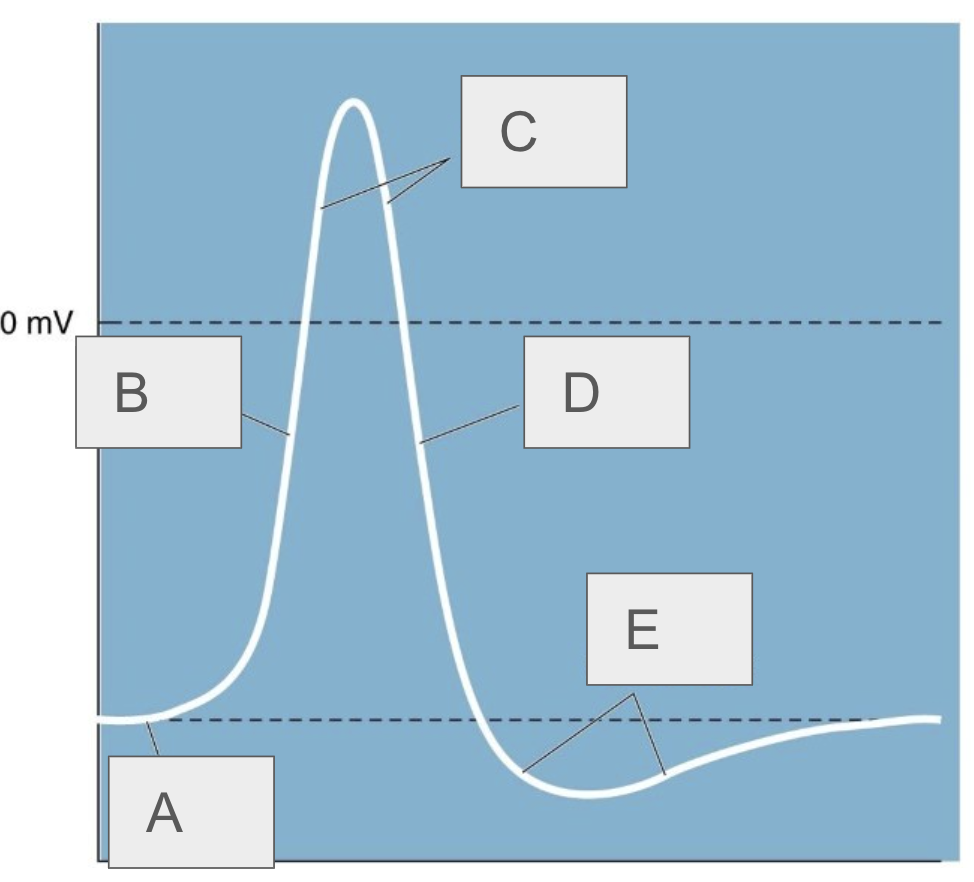
D
falling phase
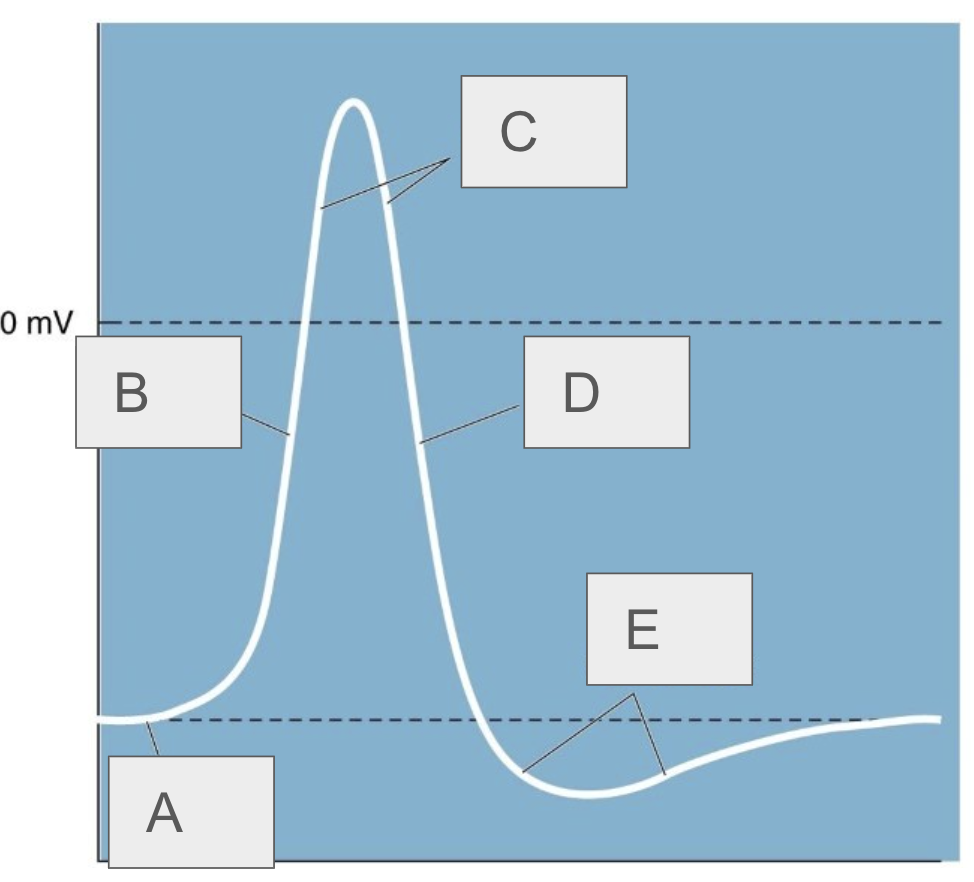
E
undershoot
how do neurons communicate stronger signals through action potentials
higher frequency of action potentials (NOT higher voltage spikes)
why is conduction unidirectional in neurons
Na+ wants to diffuse forwards because it is more negative in that region, previously used Na+ channels are inactive
conduction occurs at a faster velocity in _ axons
wider
saltatory conduction
the action potential leaps from one node of Ranvier to another
EPSP
excitatory post synaptic potential - ligand gated Na+ channels open to make neuron more positive (easier to cause an action potential)
IPSP
inhibitory post synaptic potential - K+ and Cl- channels open, neuron become more negative (hyperpolarized) so its harder to cause an action potential

What does the picture show
close temporal spacing - two signals sent in close succession

What does the image show
simultaneous stimuli - two signals received at the same time
spatial summation
signals are received by dendrites that are close together and are summed
what determines if an action potential is fired
if the sum of all the incoming signals is enough to depolarize the membrane at the axon hillock past the threshold
vagus nerve stimulation showed that
messages can be sent through chemicals
how do ions travel between neurons in electrical synapses
gap junction channels
characteristics of electrical synapses
faster, weaker, usually large networks
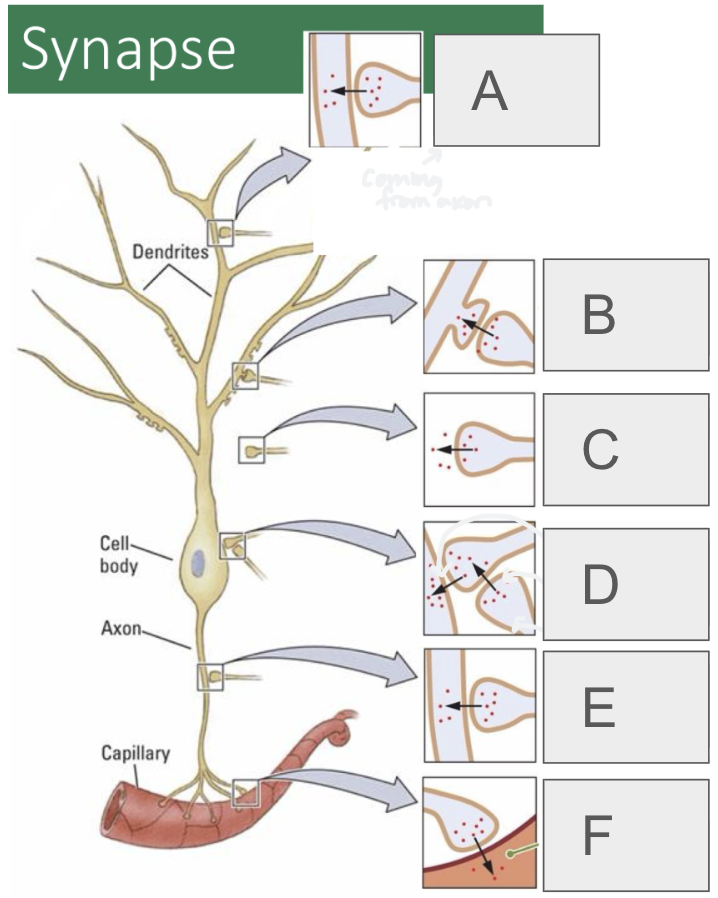
A
axodendritic
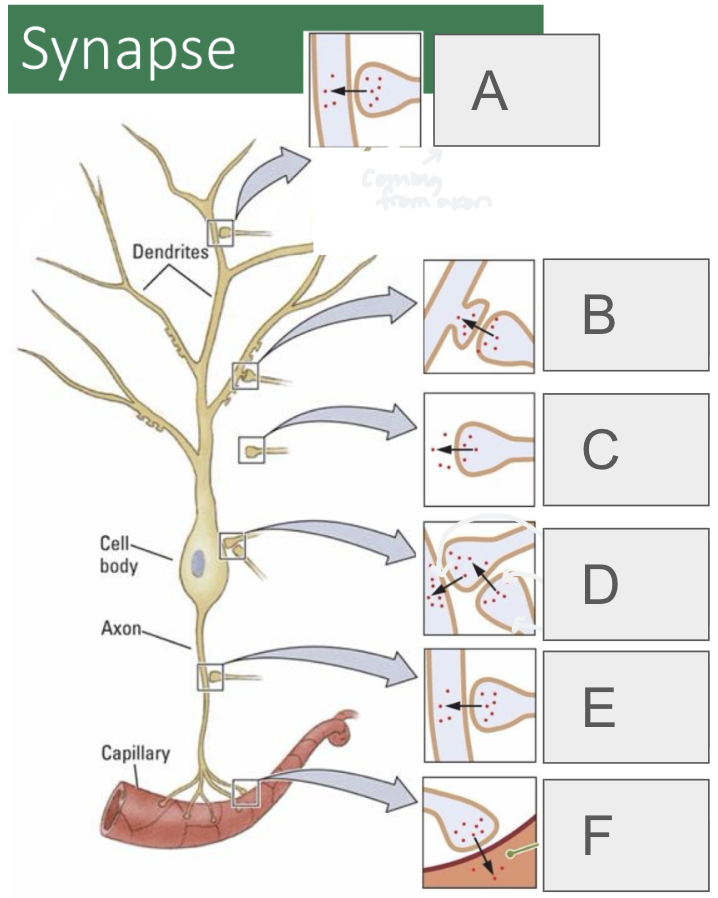
B
axospinous
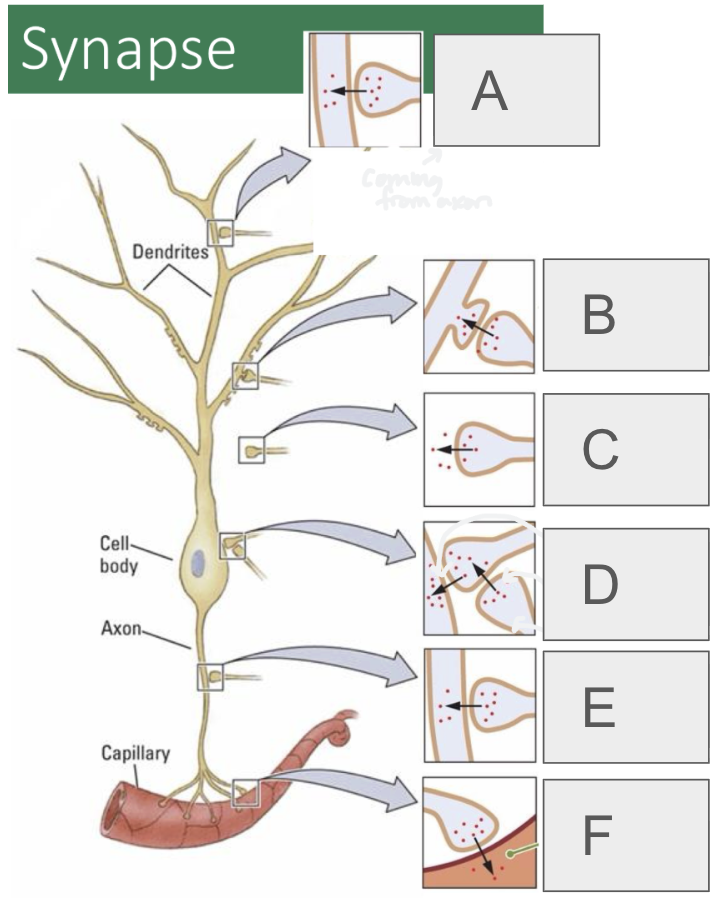
C
axoextracellular
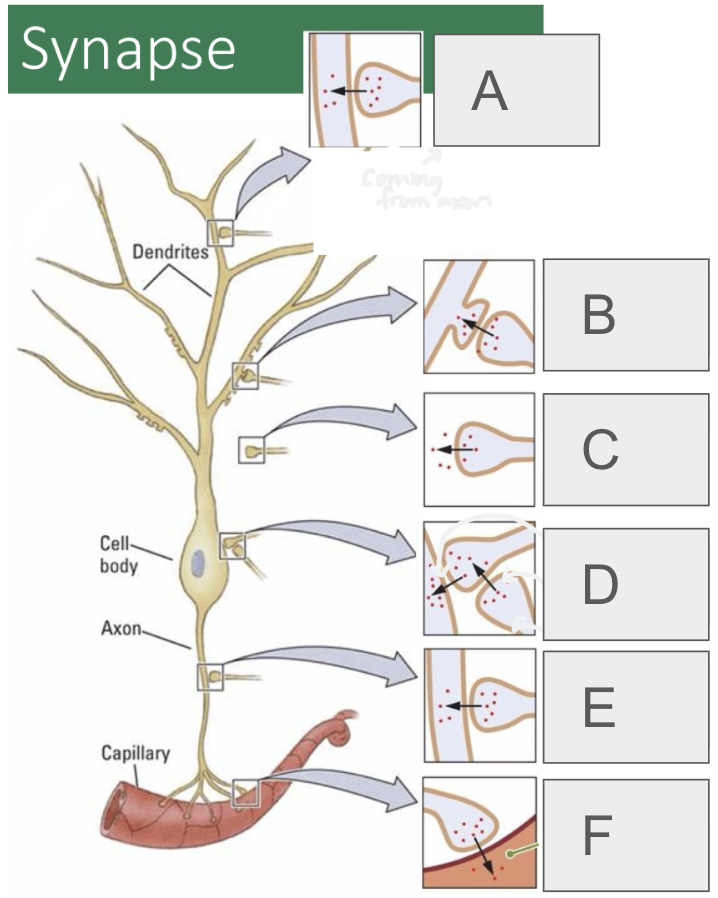
D (2 types)
axosomatic, axosynaptic
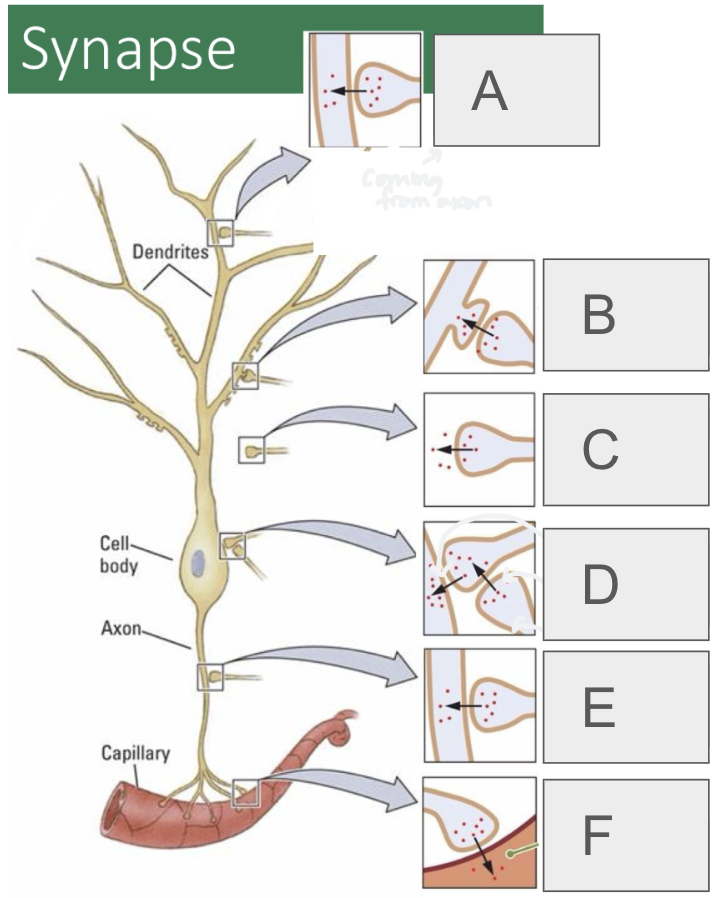
E
axoaxonic
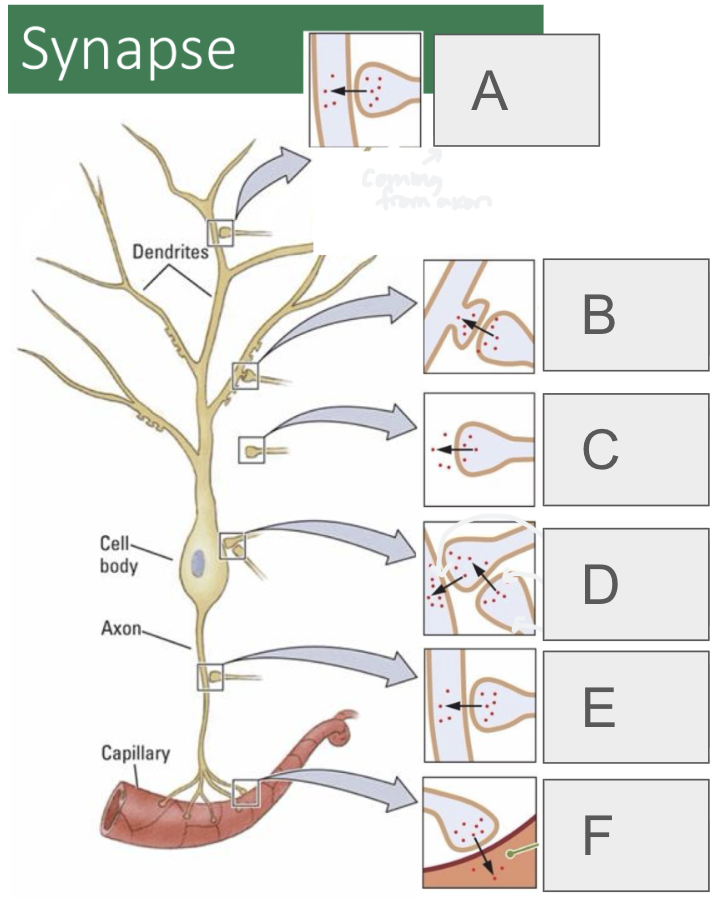
F
axosecretory (from axon to bloodstream or muscle)
neuromuscular junction characteristics
axon branches apart, junctional folds to trap neurotransmitters
4 types of neurotransmitters
amino acids, amines, peptides, gasotransmitters
2 main amino acid neurotransmitters
GABA, glutamate
4 stages of neurotransmission
neurotransmitter synthesis and storage, neurotransmitter release, receptor activation, neurotransmitter deactivation
synaptic vesicles hold
amino acids, amines
peptide synthesis process
made in cell body and packaged into secretory vesicles (rough ER and golgi)
snare protein function
tie vesicles to the cell membrane
process of neurotransmitter release
action potential depolarizes axon terminal, Ca2+ channels open, Ca2+ rushes in causing vesicles to fuse to membrane, vesicles dump out neurotransmitters (exocytosis)
receptor activation process
neurotransmitter binds to ligand gated channel which opens and lets ions in/out
receptor on presynaptic neuron that binds to its own neurotransmitters for regulation purposes
autoreceptor
neurotransmitter deactivation methods
glia uptake, enzyme degradation, diffusion, reuptake (endocytosis)